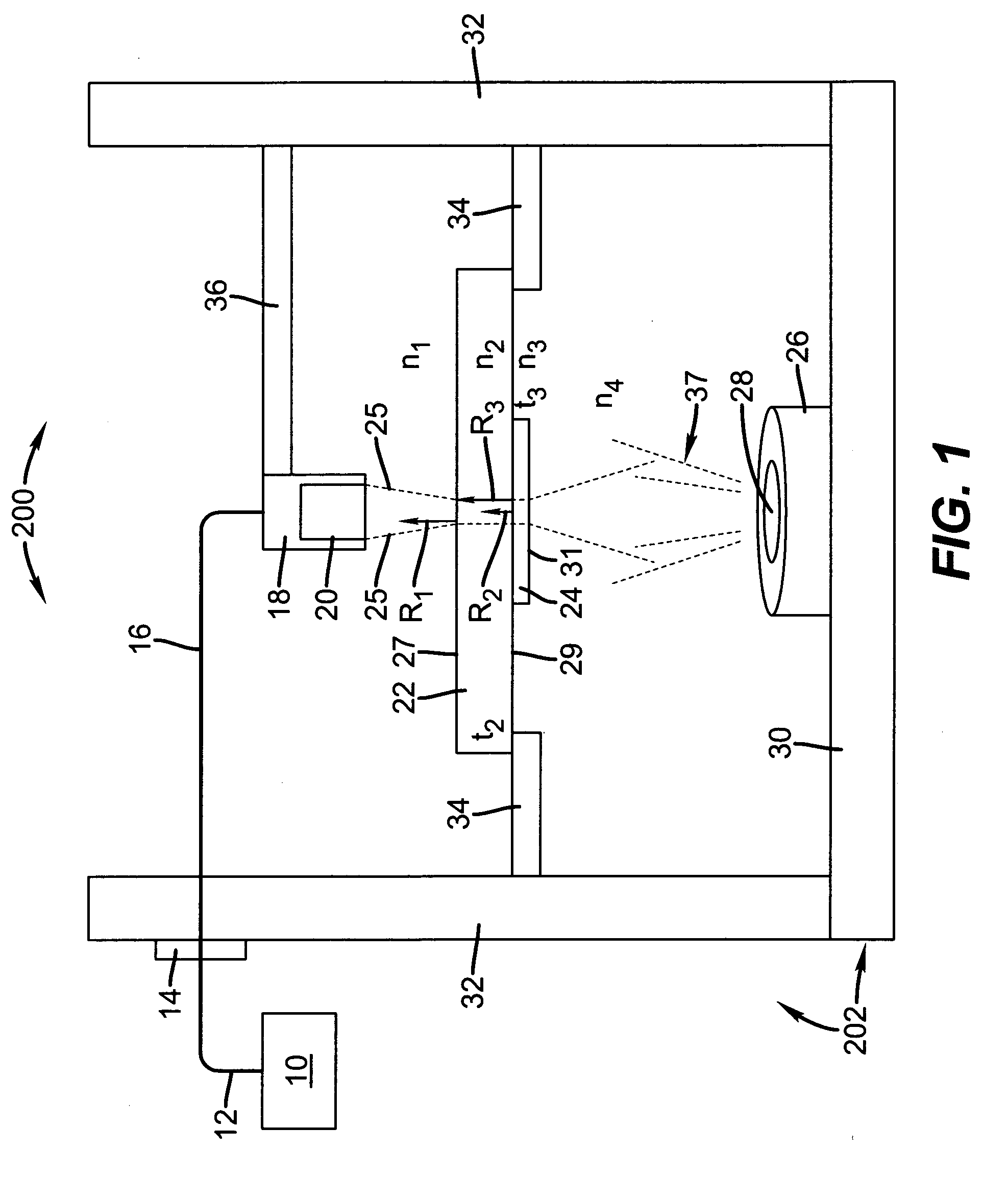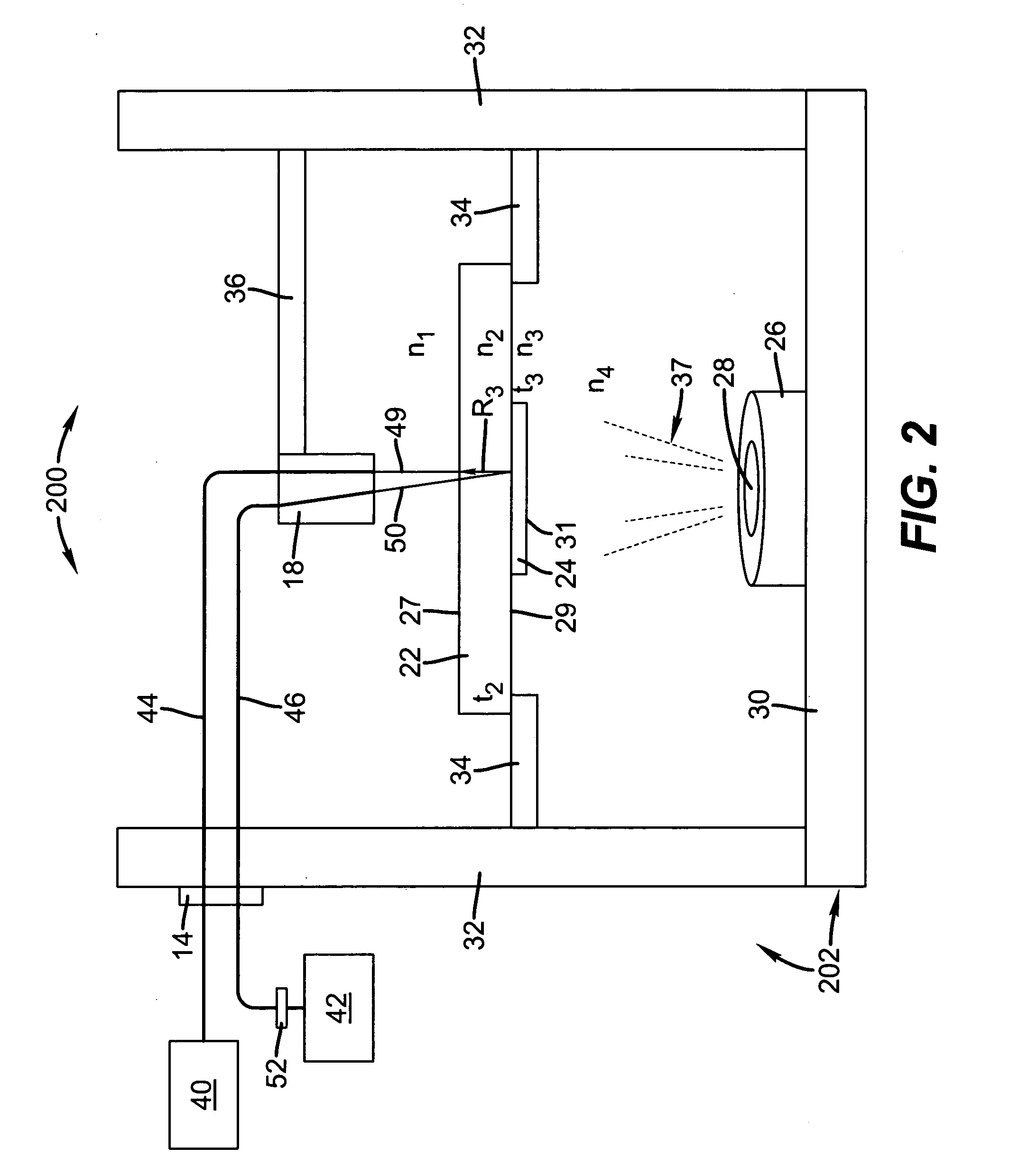Measuring layer thickness or composition changes
a technology of composition change and layer thickness, applied in the direction of mechanical measuring arrangement, semiconductor/solid-state device testing/measurement, instruments, etc., can solve the problems of inability to work with in situ measurement, and inability to achieve in situ measuremen
- Summary
- Abstract
- Description
- Claims
- Application Information
AI Technical Summary
Benefits of technology
Problems solved by technology
Method used
Image
Examples
example # 1
EXAMPLE #1
[0095] This example used a coating apparatus that operates at a pressure of about 1×10 −6 Torr. The main working components designed for the in situ measurements are shown in FIG. 10. A witness plate 120, or mother glass or substrate, is disposed behind a metal aperture plate 126 or shadow mask that allows the plume of evaporated material to deposit a sample 122 through aperture 124 onto a known area, which is about a 1 inch diameter spot in the case of the metal plate. In one embodiment, the optics on excitation and collection fiber optic cables 44, 46 are collimating lenses, which illuminate and collect the luminescence from a spot of ¼″ radius. The excitation beam is collimated to ¼″, and collection fiber 46 also has a lens on it to view a ¼″ area overlapping with the excitation spot directed to sample 122. In one embodiment, collection fiber 46 is at approximately 22 degrees with respect to excitation fiber 44, and the plane containing collection and excitation fibers ...
PUM
 Login to View More
Login to View More Abstract
Description
Claims
Application Information
 Login to View More
Login to View More - R&D
- Intellectual Property
- Life Sciences
- Materials
- Tech Scout
- Unparalleled Data Quality
- Higher Quality Content
- 60% Fewer Hallucinations
Browse by: Latest US Patents, China's latest patents, Technical Efficacy Thesaurus, Application Domain, Technology Topic, Popular Technical Reports.
© 2025 PatSnap. All rights reserved.Legal|Privacy policy|Modern Slavery Act Transparency Statement|Sitemap|About US| Contact US: help@patsnap.com



